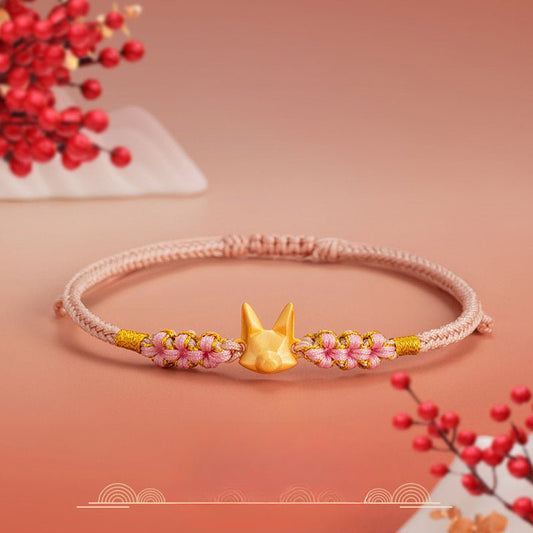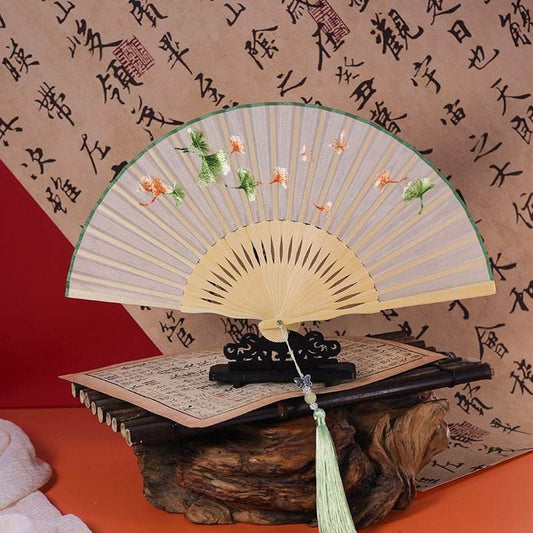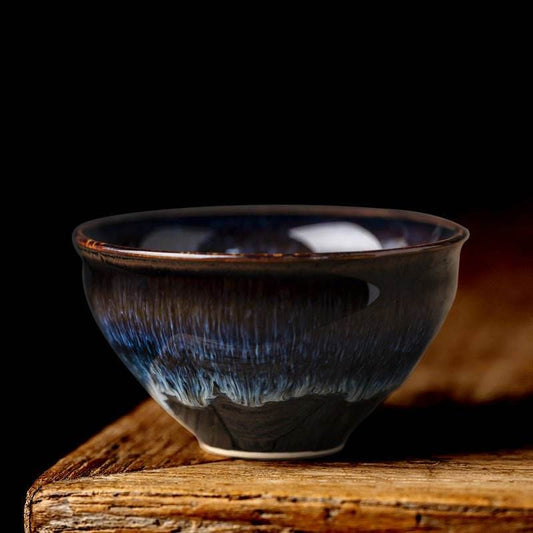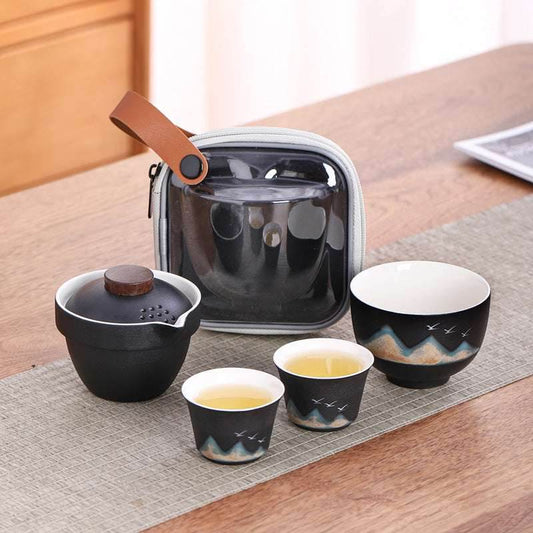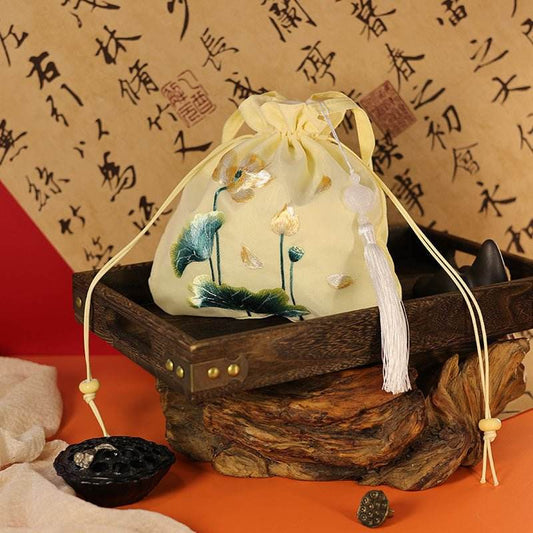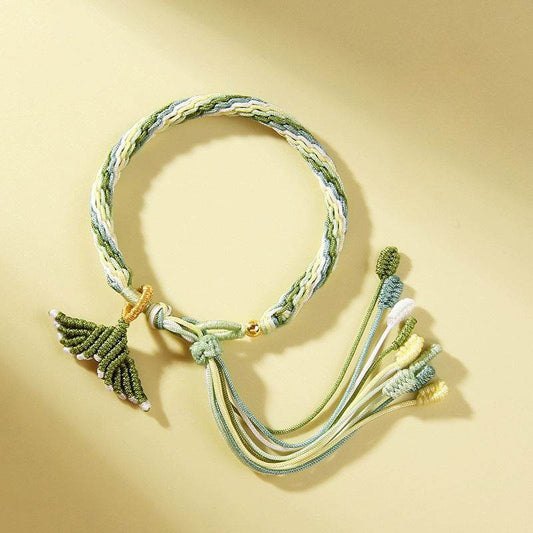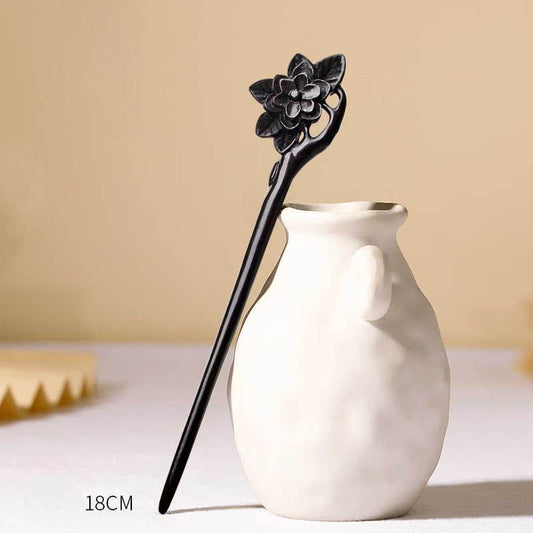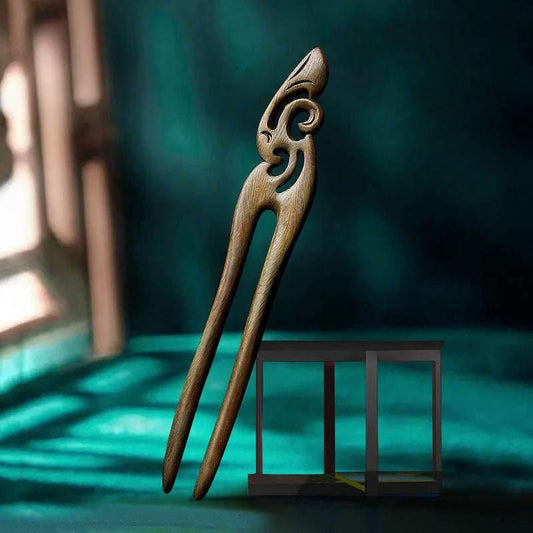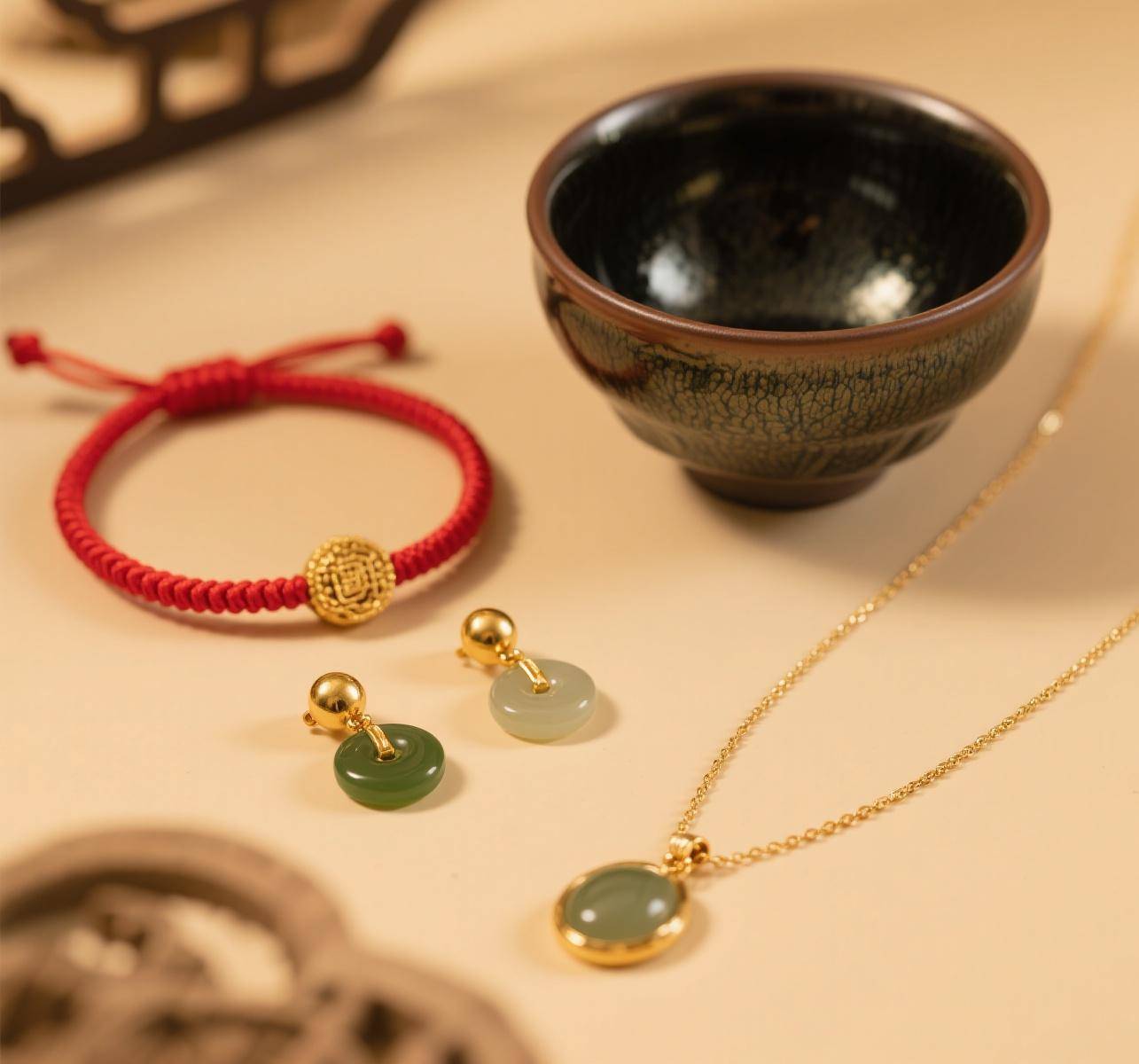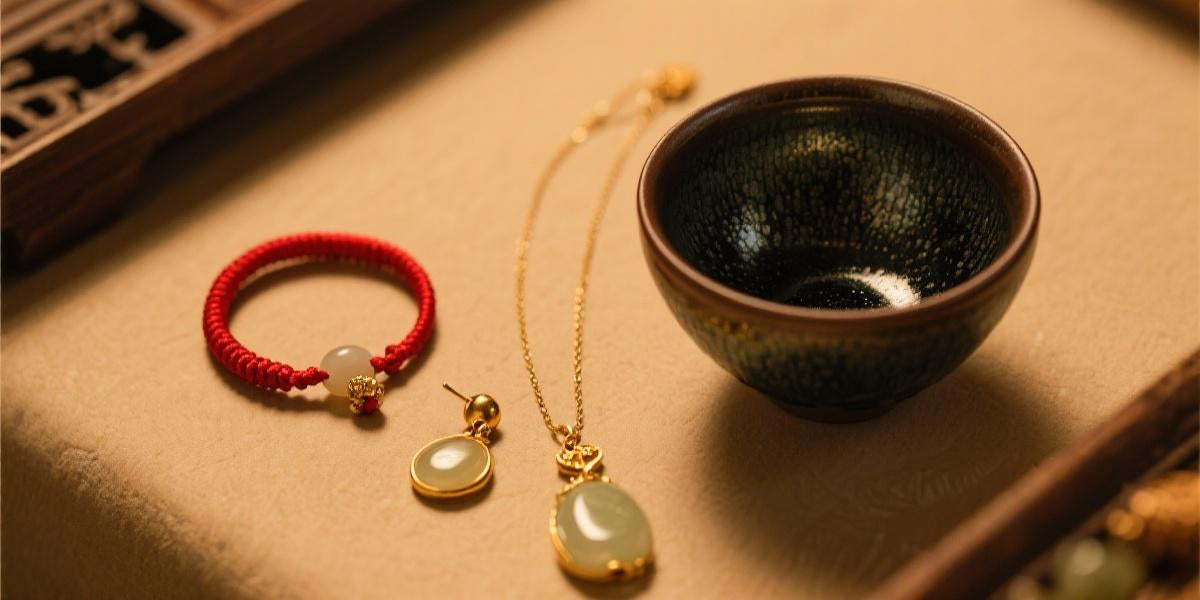-
Antique Chinese Scroll Painting | Zhao Chang New Year Art HD - STAR8S
Regular price $28.88save: 52% Sale price $28.88 Regular priceUnit price / per$60.99Antique Chinese Scroll Painting
This exquisite Antique Chinese Scroll Painting features the iconic Zhao Chang New Year Art style, showcasing intricate details and vibrant colors. The scroll painting is a timeless piece of Chinese art that adds elegance and sophistication to any space.
HD Painting
This high-definition painting brings the beauty of Chinese art to life with stunning clarity and precision. Each brushstroke and detail is captured in vivid detail, allowing you to appreciate the craftsmanship and artistry of the Zhao Chang New Year Art style.
Chinese Art Collector
Perfect for the discerning Chinese art collector, this Antique Chinese Scroll Painting is a rare find that showcases the talent and skill of traditional Chinese artists. Display it proudly in your collection or gift it to a fellow art enthusiast.
Zhao Chang New Year Art
The Zhao Chang New Year Art style is characterized by its festive themes, bold colors, and intricate designs. This painting captures the essence of Chinese New Year celebrations, making it a meaningful and symbolic addition to your art collection.
Unique Hand-Painted Artwork
Each Antique Chinese Scroll Painting is hand-painted by skilled artists, ensuring that every piece is unique and one-of-a-kind. Embrace the rich cultural heritage of China with this exceptional artwork that celebrates tradition and creativity.
Sale -
Traditional Chinese Scroll Painting | HD Printed Bian Wenjin Vase & Floral Art - STAR8S
Regular price $28.88save: 52% Sale price $28.88 Regular priceUnit price / per$60.99🎍 Timeless Ming Dynasty Elegance
Celebrate eternal spring with this HD museum reproduction of Bian Wenjin's iconic New Year's Day Scroll. Our archival printing precisely replicates the 15th-century original's plum blossom arrangements in antique bronze vases 🏺. Measuring 140×70cm, this scroll radiates imperial sophistication perfect for formal spaces.
🖌️ Art Historical Precision
Created using 16-bit color calibration, this reproduction preserves:
• Crystalline glaze textures on ritual vessels
• Delicate pink petals 🌸 with veining details
• Gold-leaf accents on lacquered shelves Each element reflects Bian Wenjin's Court Painter status during the Xuande reign (1426-1435).🏯 Designed for Cultural Spaces
Ideal for:
✓ Dining rooms needing auspicious decor ✓ Hotel lobbies desiring Ming grandeur ✓ Heritage homes honoring traditions The scroll's vibrant palette complements both classical interiors and contemporary Asian fusion designs 🪑.🌺 Symbolism Unveiled
Every detail conveys New Year blessings:
• Plum blossoms = resilience & renewal
• Ritual vases 🏺 = peace & prosperity
• Persimmon branches = good fortune A masterclass in Ming Dynasty symbolic language from China's foremost flower-and-bird painter.🛡️ Curator-Approved Preservation
Includes:
• Fade-resistant xuan paper (museum-grade 300gsm) • Hand-rolled silk edges with cloud motifs • Bilingual certificate 📜 documenting provenance "This scroll makes literati aesthetics accessible to modern collectors." - Asian Art CuratorSale -
Vibrant HD Chinese Scroll Paintings | Qiu Ying's Maple Tree Fishing - STAR8S
Regular price $28.88save: 52% Sale price $28.88 Regular priceUnit price / per$60.99🎨 Reviving a Ming Dynasty Masterpiece
Breathe life into your walls with this museum-grade reproduction of Qiu Ying's iconic 16th-century scroll. Our HD archival printing captures every nuanced brushstroke of the original Chinese scroll painting, preserving the tranquil fishing scene beneath fiery maple trees 🍂. Measuring 58"x23", this artwork converts any room into a cultural sanctuary.
🖌️ Precision Artistry Unveiled
Utilizing 14-color pigment technology, we replicate the original's delicate ink washes and mineral pigments. Observe how:
• Gilded maple leaves 🍁 glow with autumn warmth • Angler's straw hat shows woven texture details • Mountain creek ripples with dynamic realism Each element honors Qiu Ying's poetic realism style perfected during the Ming era.🏯 Designed for Modern Spaces
Ideal for:
✓ Meditation rooms seeking visual calm ✓ Luxury lobbies desiring artistic prestige ✓ Home libraries craving scholarly ambiance The scroll's neutral earth tones blend seamlessly with contemporary and traditional décors alike 🪑.🌿 Legacy in Every Detail
Created during China's Jiajing Reign (1522-1566), this work embodies the Daoist balance between humanity and wilderness. The solitary fisherman represents scholarly retreat, while crimson foliage symbolizes life's ephemeral beauty. A window into Ming Dynasty philosophical ideals 📜.
🛡️ Curatorial Standards Applied
Your heirloom-quality scroll includes:
• Fade-proof mulberry paper (420gsm archival grade) • Numbered authenticity plaque 🔖 "More than decor – a 500-year artistic narrative preserved." – Gallery Curator StatementSale -
Chinese Scroll Painting - Shen Zhou's Yellow Chrysanthemums & Red Osmanthus HD Print - STAR8S
Regular price $28.88save: 52% Sale price $28.88 Regular priceUnit price / per$60.99Elevate your space with this exquisite Shen Zhou Yellow Chrysanthemums & Red Osmanthus Scroll Painting, meticulously reproduced in HD archival ink. As a masterpiece from the Ming Dynasty's literati painting tradition, this Chinese scroll artwork captures the poetic harmony between resilient chrysanthemums and auspicious osmanthus blooms.
Printed on heavyweight 280gsm art paper with fade-resistant pigments, our HD reproduction maintains the original's delicate brushstrokes and symbolic depth. The golden chrysanthemums represent longevity in Chinese culture, while crimson osmanthus blossoms symbolize prosperity - making this scroll painting ideal for enhancing living rooms or meditation spaces with cultural significance.
Measuring 24"x48" with traditional silk endknobs, this museum-quality scroll painting comes ready to display. The vertical composition follows classical Chinese wall art principles, creating visual balance in modern interiors. Art collectors appreciate the embossed seal of Shen Zhou, the 15th-century master who pioneered the Wu School painting style.
Perfect for Asian-inspired home decor, this scroll wall hanging brings scholarly elegance to study rooms or tea ceremony spaces. The HD printing technique preserves subtle ink wash textures, allowing you to admire every detail - from the chrysanthemum's layered petals to the osmanthus' delicate stamens. Includes protective tube and hanging instructions.
More than wall decor, this is a cultural artifact bridging ancient artistry with modern reproduction technology. An exceptional gift for enthusiasts of Chinese scroll paintings, it arrives with a certificate of authenticity and care guide. Transform your space with timeless elegance that sparks conversations about literati art traditions.
Sale -
Timeless Chinese Scroll Paintings | HD Print Guzheng Art Zhao Ji
Regular price $28.88save: 52% Sale price $28.88 Regular priceUnit price / per$60.99Elevate your space with this exquisite HD print reproduction of Zhao Ji's iconic Listening to the Qin Chinese scroll painting. Featuring the poetic harmony of guzheng musicians in a classical landscape, this artwork embodies the refined aesthetics of Song Dynasty literati. Printed on archival-quality silk-textured paper, it adds timeless elegance to Zen living rooms, meditation tea houses, or scholarly studies. Each detail – from the flowing robes to the misty pine trees – captures Zhao Ji's mastery of ink wash techniques. Frame it as a statement piece for cultural sophistication or gift it to connoisseurs of traditional Asian art.Sale
Collection: Chinese Painting
1. Introduction: Why Chinese Painting is the Perfect Starting Point for Art Lovers 🖌️🌿
Chinese painting is a centuries-old art form that combines expressive brushwork, symbolism, and philosophy in a way that’s both meditative and visually striking. If you're a beginner interested in learning this timeless tradition, you're in the right place! Chinese painting offers a unique approach to art-making that doesn't require years of formal training to begin. Instead, it focuses on intuition, connection to nature, and spirituality, making it the perfect starting point for anyone eager to explore the world of painting.
What makes Chinese painting unique is the use of simple tools to create deeply expressive works of art. The art form celebrates both precision and freedom, allowing artists to evoke complex emotions using just a brush, ink, and water. Whether you're drawn to its rich symbolism, its meditative process, or the idea of creating art with minimal materials, Chinese painting offers something for everyone. 🌸✨
In this article, we’ll walk you through the essential materials, fundamental techniques, and key styles of Chinese painting to get you started on your artistic journey!
2. Understanding the Philosophy Behind Chinese Painting ☯️📜
Before diving into the practical aspects of Chinese painting, it’s important to understand the philosophy that drives this art form. Chinese painting is closely tied to Taoism, Confucianism, and Buddhism, all of which emphasize harmony, balance, and spiritual connection.
The Role of Nature in Chinese Painting 🍃
In traditional Chinese art, nature is not just a subject to be replicated, but a source of spiritual insight. Mountains, water, trees, and animals often serve as metaphors for life’s flow, inner peace, and cosmic balance. For example, bamboo symbolizes strength and flexibility, while lotus flowers represent purity and spiritual enlightenment.
The Concept of Yin and Yang ⚖️
The concept of Yin and Yang plays a central role in Chinese art. It suggests that everything in the universe is made up of opposites that complement each other. In Chinese painting, this balance is achieved through the use of contrasting brush strokes, the blending of light and dark colors, and the interplay between empty space (the "white") and the painted elements (the "black"). Harmony is at the heart of Chinese painting, with every brushstroke contributing to the overall equilibrium of the artwork.
3. Must-Have Materials for Beginners 🎨🧰
Unlike many Western painting traditions, Chinese painting requires only a few essential materials. Here's a list of the must-have tools to get you started, along with tips on how to choose the right ones for your work.
✅ Brushes
The most important tool in Chinese painting is the brush. Chinese brushes come in a variety of shapes, sizes, and materials, and each one creates a unique effect. Brushes with soft bristles are best for fluid brushstrokes, while hard-bristled brushes are better for fine details. Beginners should start with a basic round brush, which offers versatility for both fine lines and washes.
-
Tip: If you're using a brush for the first time, practice basic strokes like dots, lines, and sweeping curves to get a feel for how the brush moves across the paper.
✅ Ink
Traditional Chinese painting uses solid ink sticks that are ground on an ink stone to create ink. This method allows the artist to control the intensity of the ink and adds a meditative quality to the painting process. If you prefer something more convenient for beginners, you can also use pre-mixed bottled ink.
-
Tip: If you're using an ink stick, start by grinding the ink in small circular motions until it reaches the desired consistency (neither too watery nor too thick).
✅ Xuan Paper (Rice Paper)
Xuan paper, also known as rice paper, is the most commonly used material in Chinese painting. It's designed to absorb ink and water, allowing for the creation of smooth and fluid brushstrokes. Xuan paper is ideal for traditional Chinese ink wash painting due to its ability to hold ink and create a beautiful, flowing texture.
-
Tip: Start with medium-weight Xuan paper, as it's easier to handle than thin rice paper and more forgiving when you're learning.
✅ Ink Stone
The ink stone is used for grinding the ink stick into ink. It’s a beautiful, functional object that has been used in Chinese painting for centuries. The surface of the stone is smooth, allowing for the ink to be mixed thoroughly with water.
-
Tip: Choose a medium-sized ink stone to ensure that you have enough space for mixing ink without it spilling.
✅ Color (Optional for Beginners)
While black ink is traditionally the primary medium in Chinese painting, many artists also use colors derived from natural minerals or vegetable sources. Beginners may want to focus on ink painting first and add color later, once they’re comfortable with the basic techniques.
-
Tip: Watercolors can be a good starting point for beginners who want to add subtle hues to their work.
4. Foundational Techniques in Chinese Brush Painting ✍️💦
Chinese painting is all about control and expression. Here are the foundational techniques that every beginner should master to build confidence and skill in their brushwork.
Basic Brush Strokes
Start with the basic brushstrokes that will form the foundation for all your work:
-
Dots (点): These are tiny, precise strokes used to create the appearance of texture (e.g., flowers, leaves).
-
Lines (线): Straight or curved lines are used for outlines, contours, and details.
-
Washes (泼墨): These large strokes are used to create backgrounds or gradients, and they emphasize the importance of balance and light in Chinese painting.
-
Dry Brush: The dry brush technique is used to create rough textures, giving the painting an expressive, organic feel.
Controlling Ink and Water
One of the key challenges for beginners is mastering the control of ink and water. Too much water can cause ink to run uncontrollably, while too little water can make the ink appear too harsh. With practice, you’ll learn how to adjust the ratio of ink to water to achieve the desired intensity and flow.
-
Tip: Start with light ink washes and gradually increase the darkness of your strokes.
The “Bone Method” (骨法) 🦴
The “bone method” refers to the structural brushwork that gives Chinese paintings their strength and precision. It’s the underlying technique for creating line work that’s both firm and graceful. As a beginner, it’s important to develop a strong foundation in controlling your brush’s pressure and fluidity.
-
Tip: Practice holding the brush with light pressure for thin lines and heavy pressure for thicker strokes. This creates variation in your brushstrokes and adds depth to your artwork.
5. Learning the Two Main Styles of Chinese Painting 🏞️🖼️
Chinese painting can be broadly divided into two major styles: Gongbi (工笔) and Xieyi (写意). Understanding the difference between these styles will help you choose the one that resonates with your artistic sensibilities.
🖌️ Gongbi (工笔) – Meticulous Style
Gongbi is a detailed and precise style of painting that focuses on fine brushwork, intricate details, and a high level of realism. In Gongbi, the brushstrokes are deliberate and carefully executed to create visually detailed images of birds, flowers, insects, and other natural elements.
-
Tip: Beginners interested in precision and detail should try their hand at Gongbi, focusing on small sections of a subject and gradually building up the painting with layer after layer of ink.
🌊 Xieyi (写意) – Freehand or Spontaneous Style
Xieyi is more expressive, abstract, and free-flowing. In this style, the focus is not on exact reproduction, but on conveying the spirit or essence of the subject. The brushwork in Xieyi is often bold, with fluid, sweeping lines used to create atmosphere and emotion.
-
Tip: Xieyi is great for beginners who want to focus on expressive brushwork and spontaneity. It’s about capturing the essence of the subject, rather than perfection.
6. Step-by-Step: Your First Chinese Painting Project 🎯🖌️
Now that you’re familiar with the materials and techniques, let’s move on to a simple, beginner-friendly project! In this section, we’ll guide you through a step-by-step Chinese painting project that introduces key concepts such as brush control, composition, and symbolism. For this exercise, we’ll paint bamboo, a classic subject in Chinese art that embodies strength, flexibility, and resilience.
Step 1: Prepare Your Materials 🧰
Gather your materials:
-
A round brush (soft or medium)
-
Xuan paper (rice paper)
-
Ink stick and ink stone (or bottled ink)
-
A shallow dish of water
-
A reference image of bamboo (optional)
Step 2: Set Your Intentions 🧘♂️
Chinese painting is not just about brushwork — it’s about capturing the spirit or essence of your subject. Before you begin, take a moment to clear your mind and focus on the symbolism of bamboo: it represents strength, flexibility, and the ability to withstand adversity. Let this symbolism guide your brushwork.
Step 3: The First Stroke – The Bamboo Stem 🌿
-
Dip the brush in ink and start with the main bamboo stem. This first line should be strong and steady but also fluid.
-
Hold the brush vertically and use light pressure for thin strokes and heavier pressure for thicker lines.
-
The stem should be painted in one continuous, sweeping motion to express the flow of energy and life.
Step 4: Add the Bamboo Branches 🌱
-
Once the main stem is dry, start painting the branches that extend from it. Use short, upward strokes to depict the delicate, sweeping lines of bamboo.
-
Don’t worry about creating exact replicas — focus on capturing the essence of the bamboo's elegance and strength.
-
Use a mix of light and heavy brushstrokes to add variety and texture to the branches.
Step 5: Paint the Bamboo Leaves 🍃
-
With a smaller brush, use feather-light strokes to create the bamboo leaves.
-
Bamboo leaves should be painted in clusters, and you can add some leaves that are partially obscured by others to show depth.
-
Use quick, light strokes for leaves to suggest their delicacy and movement in the wind.
Step 6: Final Touches ✍️
-
Once your bamboo is complete, let it dry for a moment.
-
Add any subtle details, such as additional texture on the bamboo stem or highlights in the leaves to emphasize their delicate beauty.
-
Optionally, you can add a Chinese character or poetry using a calligraphy brush to further personalize your painting.
7. Common Mistakes to Avoid for Beginners 🚫🧽
As you begin your Chinese painting journey, it’s easy to make a few common mistakes. Here are some things to watch out for:
1. Using Too Much Water or Ink 💧
Chinese painting relies on balance. Too much water can result in blurry strokes, while too little ink can make your lines harsh and static. Practice controlling the ink’s consistency to achieve smooth, flowing lines.
2. Overworking the Painting ✋
Chinese painting is about spontaneity and harmony. Overworking a painting, especially in Gongbi (meticulous) style, can make it feel stiff and lifeless. Learn to trust your brushwork and leave some areas unfinished or open to interpretation.
3. Rushing the Process 🕑
Chinese painting is a meditative practice. Take your time and allow the process to unfold naturally. Rushing through the steps can make the painting feel forced, diminishing the harmony and balance inherent in the work.
4. Not Paying Attention to Brush Control 🖌️
The pressure you apply to the brush, along with how you move it, greatly affects the texture and fluidity of your strokes. Practicing basic strokes like dots, lines, and sweeps will give you better control over your brush, leading to more expressive artwork.
8. Developing Your Own Style While Honoring Tradition 🎨🧘
As a beginner, it’s natural to feel the urge to replicate traditional pieces. However, part of the beauty of Chinese painting is the opportunity to find your own voice within the tradition. Here are some tips for developing your style:
1. Learn by Imitating the Masters 🎨
Imitating classical Chinese artists is one of the best ways to learn. Practice copying works by famous painters like Qi Baishi or Zhao Mengfu to understand their techniques and spirituality. But remember, it’s not about replication — it’s about learning the essence of their style.
2. Embrace Spontaneity 🖌️
Chinese painting celebrates the freedom and spontaneity of brushstrokes. Try to loosen up your approach to brushwork. Let go of perfection and focus on expressing your feelings through each stroke.
3. Add Your Personal Symbolism 🌸
Incorporating personal symbolism or poetry into your work is a great way to make your paintings unique. For example, you might use bamboo to represent strength or orchids for beauty and elegance. Personalizing your art allows you to reflect your own spiritual journey.
4. Experiment with Modern Influences 🎨🌍
Don’t be afraid to combine traditional elements with contemporary techniques. Watercolor, acrylics, or even digital art can be integrated into Chinese painting, creating exciting new interpretations while staying true to the roots of the tradition.
9. Where to Learn More and Get Inspired 📚🌐
Now that you’ve dipped your toes into Chinese painting, it’s time to keep learning! Here are some resources to continue your journey:
Books
-
"Chinese Brush Painting for Beginners" by Mei-Ling Hom
-
"The Art of Chinese Brush Painting" by Lucy Wang
Online Courses
-
Skillshare offers great beginner courses in Chinese brush painting, focusing on techniques and tools.
-
YouTube is a goldmine for free lessons, with channels like Masterpiece Art Academy offering detailed tutorials on Chinese painting basics.
Artists to Follow
-
Qi Baishi – A famous Chinese painter known for his vibrant depictions of animals and plants.
-
Zhao Mengfu – A renowned artist whose work blends calligraphy and painting in intricate ways.
Museums and Galleries
-
The National Palace Museum in Taiwan has an extensive collection of Chinese artwork.
-
The Shanghai Museum often holds exhibits showcasing classical Chinese painting techniques.
10. Conclusion: Embrace the Journey, Not Just the Result 🧘♂️🌅
Chinese painting is an art of patience, practice, and mindfulness. As you explore its techniques and embrace the philosophy behind each stroke, you’ll begin to discover your own unique expression through the medium. Don’t be discouraged by early challenges — the beauty of Chinese painting lies in its imperfection and spontaneity.
As you continue painting, remember that the goal is not just to complete a work of art but to experience the process itself. Each brushstroke is an opportunity to connect with both the subject and your inner self. 🎨💕
11. Call to Action: Start Painting Today! 🖌️📦
Ready to start your Chinese painting journey? Gather your materials, take a deep breath, and begin with your first brushstrokes. Share your progress and thoughts with us in the comments or on social media! Whether you're painting bamboo, flowers, or landscapes, the key is to enjoy the process and let your creativity flow. 🖌️✨
